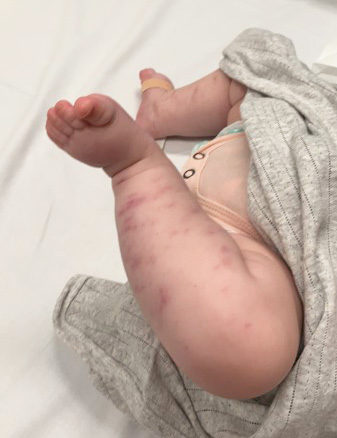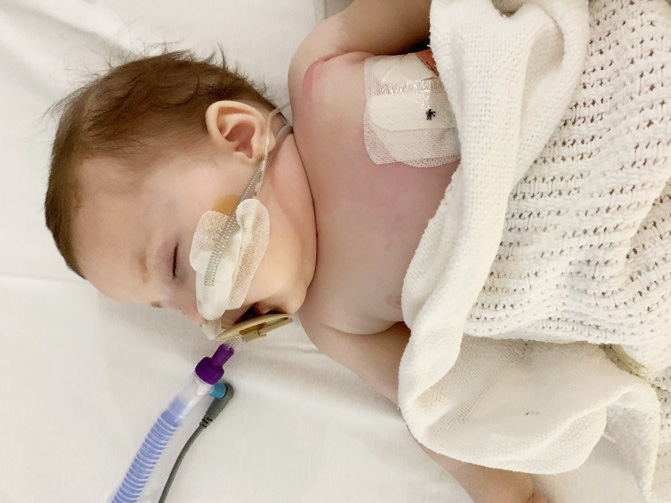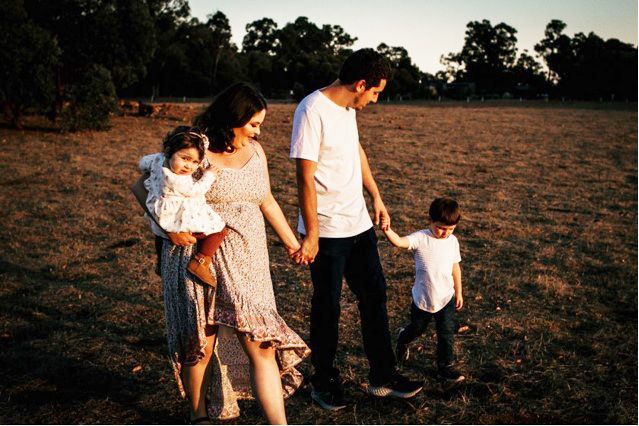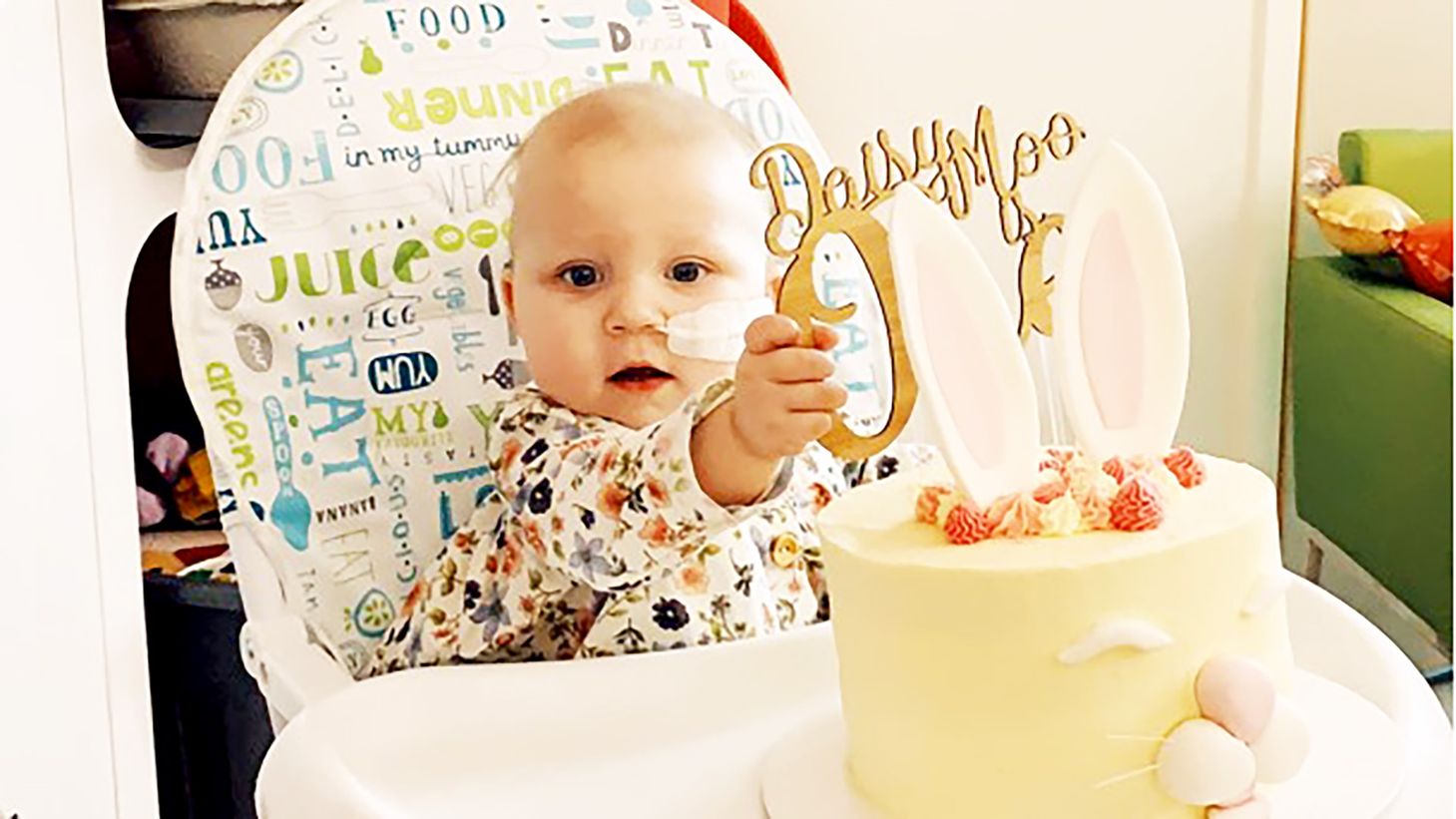As a mother, you will do whatever you can to protect your babies, but what do you do when that option isn’t there?
In August 2018, I was preparing myself to meet my new baby: A little girl to add to our family. At 3.09 pm, our beautiful little girl came into the world—she was placed in her dad’s arms for first cuddles and I got to see her for the first time. She was 3.3 kg, 46 cm and had a perfect head of thick black hair. Our little Daisy was here.
After three days in hospital and a quick visit to special care for low blood sugars we went home. We adjusted to home life and Jack loved his little sister. She was rolling over and smiling at anything her big brother did. She was doted on by everyone in the family.
Around the end of October, I began taking Daisy to the health nurse, worried that she was not drinking enough. From birth, she had been fussy on the bottle and was slow to gain weight. The health nurse recommended trying smaller, more frequent feeds, which I tried for a few weeks, but she still was not gaining more than 50 grams a week. That was until the week before Christmas, when she suddenly gained 500 grams in a week.
It was a massive shock to me and I was certain that was not normal. The health nurse, however, passed it off as a good gain and was happy, so I went home none the wiser that this was the start of more symptoms to come over the coming weeks.
On New Year’s Eve, we had visitors and Daisy was happy to have cuddles and play. It was around 3 pm when they left and we were sitting back watching the kids when my husband pointed out that Daisy’s abdomen looked bloated. I checked and it did seem quite large, and I also noticed some purple marks on her lower legs and feet. Being New Year’s Eve, the GP was closed, so we decided to keep an eye on her, but by 6.30 pm that night she was refusing all food. I called the medical helpline, HealthDirect, who advised we take her to the local hospital’s emergency department.
On New Year’s Day 2019, at 2 am, we heard the words no parent should ever have to hear: “She has leukaemia.”
Sitting in that tiny emergency cubicle was suffocating—all I wanted to do was run. I held my sleeping baby girl and cried. Our hearts were broken and our minds racing with a thousand questions. We called our parents and told them the news and were taken up to the ward. Seeing the sign “Oncology Ward” as we walked the halls in the middle of the night was hard and did not feel real.
How did this happen? Why her? What did we do wrong? Will she die?
We were in shock, we didn’t eat, didn’t sleep and didn’t talk for hours until the doctors came back at 8 am and said she would need an operation to put a central line in her tiny body. They would also need to perform a bone marrow aspirate and a lumbar puncture to determine what type of leukaemia she had, which would determine what treatment she would receive.

Barely five months old, Daisy was diagnosed with acute lymphoblastic leukaemia. It’s the most common form of cancer in children aged 0–14 years, with the most common age of diagnosis being 2–4 and mostly in boys. Daisy’s case was rare, being a baby under one—the doctors told us she was only the second baby they had treated. Her protocol was new and they had not used it before—the doctors were learning as they went about this intense and complicated treatment plan.
The first two rounds of chemotherapy delivered in four-week blocks were relatively easy for Daisy—she kept her hair, she only had a few fevers, infections and other sicknesses. She had a nasal gastric tube put in to help her keep up with nutrition and to stay a healthy weight. The chemotherapy did make her nauseous and she was vomiting a lot every day. The drugs also caused bad nappy rash which caused her a lot of pain. Watching her so sick and hooked up to so many machines all the time was hard, but she got me through. She was so smiley and so happy most of the time and the nurses and doctors all loved her.
After the third round of chemotherapy in May, Daisy deteriorated extremely fast. One minute, she was fine and the next she was screaming in what seemed to be pain. She was given pain medications via IV and antibiotics.
They ran tests and discovered she had pseudomonas, a nasty blood infection which can turn sepsis. She also had some dead necrotic tissue inside her inner labia. Daisy was rushed to theatre where they removed the tissue.
For weeks after, we had to change dressings and give her salt baths twice a day to prevent further infection and help the healing process. She remained hooked up to strong narcotics (ketamine and hydromorphone) for weeks on end.
Just as we thought we were out of the woods, her oxygen levels suddenly dipped low and she was put on high-flow oxygen. This was by far the scariest part of Daisy’s whole treatment: She was taken for a CT scan which showed she had a fungal lung infection. We started on more antibiotics, but they didn’t help; she was getting worse.
Upon returning from the funeral of another child we had grown close to on the ward, Daisy was clearly not doing well. I sat in a chair crying and rocked her in the pram while she screamed for three hours straight before finally falling asleep.
The next morning, after a sleepless night, I stepped out for a break when suddenly, I saw all the nurses and doctors rush into our room. I ran in and grabbed Daisy from a nurse. Daisy was clearly struggling to breathe. ICU was called and I was put on a hospital bed with Daisy in my arms and wheeled to theatre to have a chest drain put in her tiny chest and hopefully drain some fluid from her collapsed lungs.
I will never forget the look of fear in her eyes as she looked up at me, struggling to breath while they put her to sleep. She was petrified and so was I—I didn’t know if this was the last time I was going to hold our baby girl.
Seeing her on the bed in recovery, she looked tiny and fragile, surrounded by pillows and blankets and a drain coming out of her chest, but she was OK. Daisy was a fighter. She had gone against all the odds again and hadn’t even needed a breathing tube and that meant we didn’t need to go to ICU and could return to the ward. Her recovery was long from this round, but we got through—just.

By round four, we were prepared for anything. We never took anything for granted and knew just how quickly things could go from good to bad. The fourth round was the longest and in this round, Daisy lost her hair, although we were all so amazed she had managed to hold on to it this long. Although the longest round—totalling three months—we got through it relatively OK with only a few small hurdles.
Daisy celebrated her first birthday in hospital surrounded by her hospital family and friends as at the time, we weren’t allowed any visitors due to her low blood counts.
After 247 days in hospital, we finally got to go home!

Our warrior had made it through the intense chemotherapy treatment and we could continue the rest of her treatment at home. This phase is called maintenance and it involves me giving her chemotherapy tablets at home and going into hospital for regular monthly blood draws and reviews.
In the time we have been home, Daisy has had to learn all the milestones she’s missed out on: learning to sit, stand up with aid, drink from a bottle, try solid food, crawling, walking with aid, talking and finally at 20 months old, she walked for the first time.
Daisy’s missed out on so much of life that a normal nearly two-year-old would have experienced, but she is doing an amazing job of catching up and showing cancer who’s boss! We are forever grateful she is still with us today and while things are good now, we will always have that little shadow of doubt hanging over our heads, but she is a fighter and I have no doubt she will win this fight.

WIN CHILDREN’S BOOKS!
Submit a personal story on your parenting journey, thoughts or experience and if we use your story, we’ll send you a selection of children’s books! Write to us at editorial@MumsAtTheTable.com.
How helpful was this article?
Click on a star to rate it!
0 / 5. 0
Be the first to rate this post!
Jacinta Neve
Related posts
Subscribe
Receive personalised articles from experts and wellness inspiration weekly!

